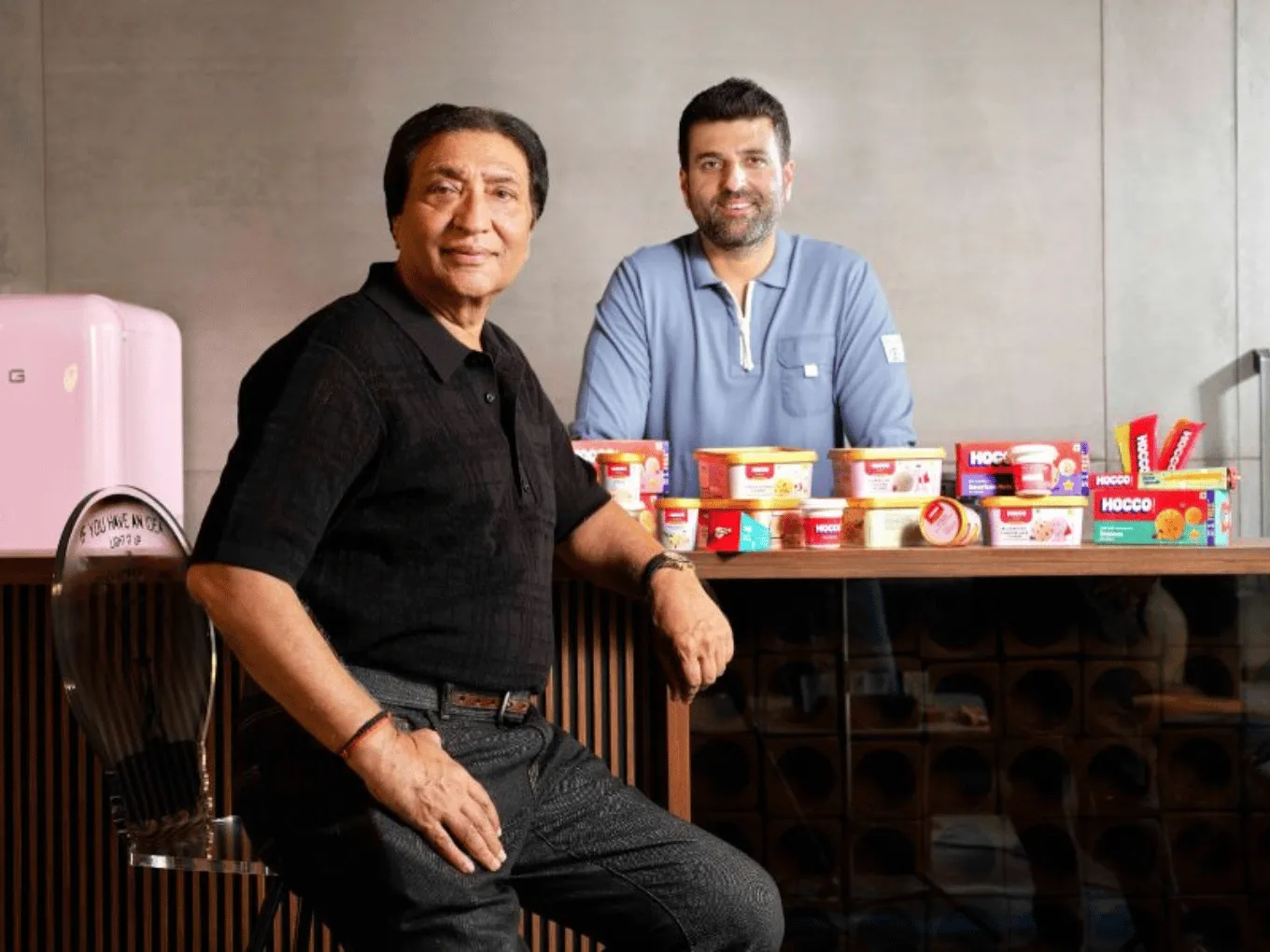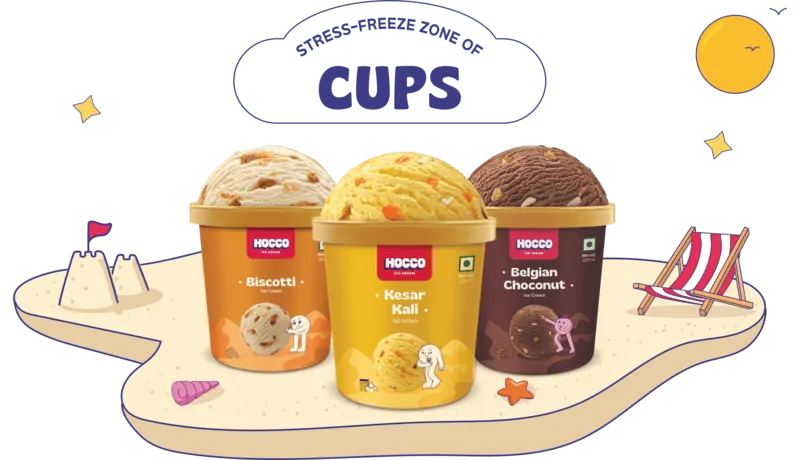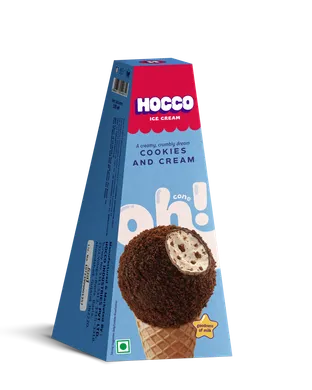.svg)
.svg)
.svg)
.svg)
.svg)
.svg)
.svg)
.svg)
Book a call and get unlimited revisions for your project!
.png)
.svg)
If you follow India’s dessert aisles, you’ve seen Hocco for sure. The bright, confident tubs, the playful cones, and the oddly satisfying names, they all belong to a brand that feels familiar and new at once.
Led by Ankit Chona, from the family behind Havmor Ice Creams, Hocco represents a return to the category with a fresh, modern voice.
Incorporated in 2019 and launched commercially in 2023, Hocco quickly captured attention across Tier 1 and Tier 2 cities with a design system that looks as delicious as the product tastes.

At Confetti, our branding and packaging experts analysed the Hocco brand story, its product range, and how its packaging strategy positions it differently in one of India’s most crowded consumer categories. Here’s what the team at Hocco has done remarkably well and how the brand has managed to reimagine what indulgence looks like.
Few brands in the frozen dessert category manage to look this unified across such diverse formats. From cones and kulfis to sundaes, cassatas, lollies, and ice cream cakes, Hocco icecream packaging brings everything together through a consistent visual system. Each pack features bold typography, flavour-led colour blocking, and appetising product imagery that connects back to the master identity.
The result is packaging that feels recognisable in an instant, whether it’s on a supermarket shelf, a quick-commerce thumbnail, or a freezer at a small neighbourhood store. Every Hocco icecream product clearly belongs to one brand family but still has its own personality.

In a category where product shape is often standardised, Hocco Ice Cream has made form part of its brand language. The Oh! Cone range reimagines a classic designed with a distinctive packaging like that of a pyramid cut up from the top, making it feel more tactile and premium than conventional cones.

Similarly, the Bix ice cream sandwich stands out for its sponge-cake construction, a deliberate departure from the biscuit-based sandwiches most Indian consumers are used to. These small, thoughtful design decisions not only make the products feel new but also give Hocco memorable visual and experiential cues that extend beyond flavour.

Naming is where Hocco truly flexes its creativity. Instead of generic names like “Mango Bar” or “Chocolate Cone”, the brand has built a fun, culture-first vocabulary like Aamchi for mango, Oh! Cone for cones, Bix for sandwiches.
This approach to nomenclature does three things exceptionally well:
It subtly educates the market that Hocco products are not substitutes for legacy ones like Cornetto or Orange Bar; they are their own category.
.webp)
By creating a brand-owned lexicon, Hocco ensures that customers ask for its products by name, and not by type. That’s a rare win in the FMCG category, especially in indulgences like Hocco icecream.
Across every sub-category, the Hocco packaging design maintains coherence without falling into sameness. The logo placement, typography hierarchy, and graphic structure remain consistent, while each flavour brings in unique accent colours or textures that help differentiate SKUs at a glance.
This level of design discipline is difficult to achieve in a category known for visual clutter. For consumers, it signals reliability and brand maturity, both of which are crucial when building trust in an indulgence category dominated by legacy names.
In India’s frozen dessert market, Amul signals trust, Kwality Wall’s signals nostalgia, and Naturals signals purity. Our design and packaging experts at Confetti found that, Hocco icecream, however, signals joy, the emotion most closely tied to indulgence.
Legacy brands like Amul and Creambell continue to use straightforward, functional naming: “Chocolate Cone”, “Mango Bar”, “Butterscotch Brick”,”Orange Bar”.
These names describe the product well, but they don’t delight. Hocco flips that approach by making its nomenclature brandable, emotional, and conversation-worthy. When consumers refer to Oh! Cone or Aamchi, they’re not just recalling a flavour, they’re recalling a personality and the brand in itself starts to stand out.
This strategy transforms ordinary SKUs into micro-brands under a cohesive master identity, strengthening long-term brand recall.
At Confetti, our branding experts found that packaging for most mainstream ice cream brands follows the same structure with a product photo on one side, a large logo on the other, and the same shape and structure follows through all icecream cones, kulfis, tubs and bars. Hocco packaging, by contrast, treats the product format itself as design theatre.
The cone’s unique packaging over opting for a paper wrap, the playful Aamchi icecream Mango-like design, the premium spong cake used over the regular biscuit on Bix, all these show how Hocco uses shapes and typography as storytelling tools. Where Naturals relies on flavour authenticity and Baskin Robbins on American nostalgia, Hocco owns the modern, design-led space, a fresh, indulgent experience made visually distinct.
By doing so, Hocco manages to price slightly higher than mass players like Kwality Wall’s while staying accessible to a wide audience which is quite a rare balance between aspiration and mass appeal.
This audit intentionally focuses on strengths. As a creative agency, Confetti would rate Hocco brand a solid 5/5 on their design, packaging, scalability and branding. If we were guiding the next wave as a creative agency, we would keep doubling down on three things HOCCO already does well.
At Confetti, our branding and packaging team helps indulgence brands build design systems that sell the feeling first and the format second.
Our design experts design for shelf, freezer and thumbnail so your product looks unmistakable in any context. If you are shaping an ice-cream or dessert brand in the FMCG category and want a distinctive packaging that sets its own personality in the cluttered market, book a call with us. The link is right beside this article.


.svg)